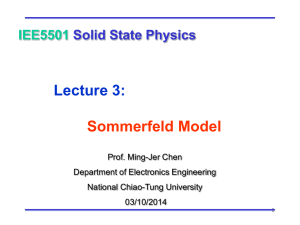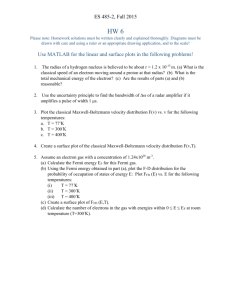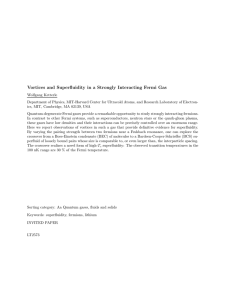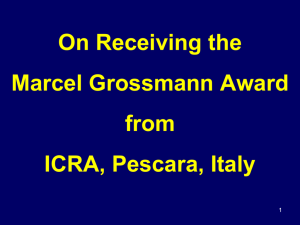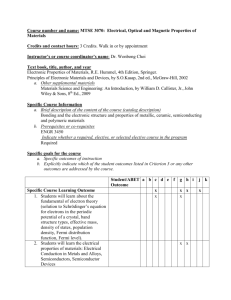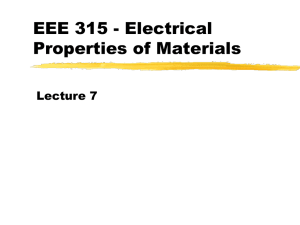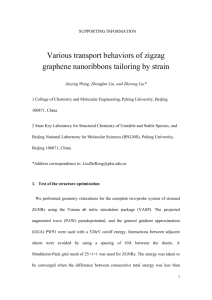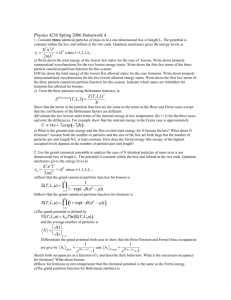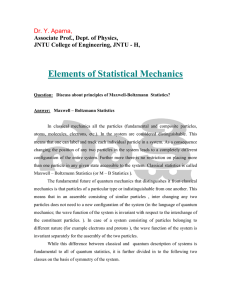Module - drpradeepatuem
advertisement
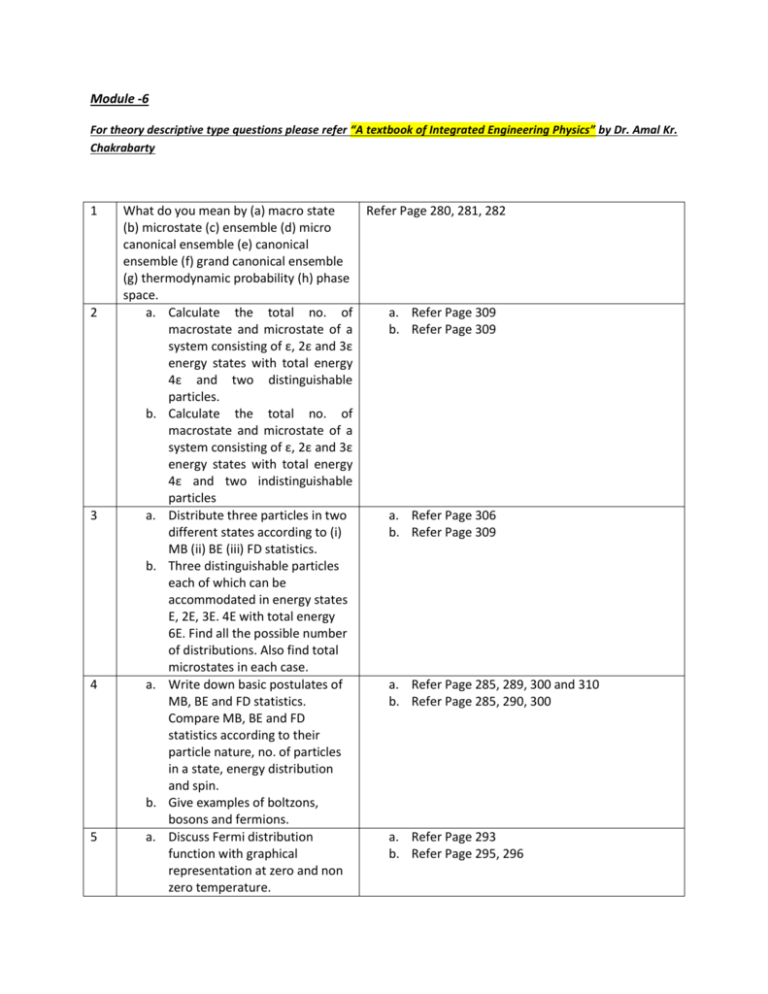
Module -6 For theory descriptive type questions please refer “A textbook of Integrated Engineering Physics” by Dr. Amal Kr. Chakrabarty 1 2 3 4 5 What do you mean by (a) macro state Refer Page 280, 281, 282 (b) microstate (c) ensemble (d) micro canonical ensemble (e) canonical ensemble (f) grand canonical ensemble (g) thermodynamic probability (h) phase space. a. Calculate the total no. of a. Refer Page 309 macrostate and microstate of a b. Refer Page 309 system consisting of ε, 2ε and 3ε energy states with total energy 4ε and two distinguishable particles. b. Calculate the total no. of macrostate and microstate of a system consisting of ε, 2ε and 3ε energy states with total energy 4ε and two indistinguishable particles a. Distribute three particles in two a. Refer Page 306 different states according to (i) b. Refer Page 309 MB (ii) BE (iii) FD statistics. b. Three distinguishable particles each of which can be accommodated in energy states E, 2E, 3E. 4E with total energy 6E. Find all the possible number of distributions. Also find total microstates in each case. a. Write down basic postulates of a. Refer Page 285, 289, 300 and 310 MB, BE and FD statistics. b. Refer Page 285, 290, 300 Compare MB, BE and FD statistics according to their particle nature, no. of particles in a state, energy distribution and spin. b. Give examples of boltzons, bosons and fermions. a. Discuss Fermi distribution a. Refer Page 293 function with graphical b. Refer Page 295, 296 representation at zero and non zero temperature. 6 7 8 b. Show that at absolute zero temperature the no of fermions per unit volume within energy range ε to ε + dε is proportional 1 to 𝜀 ⁄2 . a. Show that the average electron energy is equal to 3/5 th of the Fermi energy at absolute zero. b. Calculate the value of Average velocity, Fermi velocity and Fermi temperature. a. Use BE statistics to obtain Planck’s radiation formula for black body radiation. b. Calculate the Fermi energy in copper. Consider density of copper as 8.94 x 103 kg/m3 with atomic mass 63.5 amu. a. The Fermi energy for sodium at T=0K is 3.1 eV. Find its value for aluminium. Given that the free electron density in aluminium is approximately 7 times that in sodium. b. If the Fermi energy of a metal at thermal equilibrium is 15 eV , then find the average energy of the electron. a. Refer Page 298, 299 2 3 2 N 3 1 2 Ef mv f 2m V 2 2 b. a. Refer Page 304 2 b. a. b. 2 3 2 N 3 N N n A and E f V W 2m V nNa E f Na nAl E f Al 3 Eav E f 5 3 2 9 a. Find the electron concentration of silver atom with atomic weight 108 and number of free electron per atom as one and Fermi energy 4.5 eV at 0 K. b. Calculate Fermi energy at 0K of metallic silver containing one free electron per atom. The density and atomic weight of silver is 10.5 g/cm3 and 108 g/mol respectively. a. b. 2 3 2 N 3 N N n A and E f V W 2m V a. 3 2 N 3 Ef 2m V 2 2 10 a. There are about 25 x 1028 free electrons/m3 in sodium. Calculate its Fermi energy, Fermi velocity and Fermi temperature. b. A system with non-degenerate single particle state with 0,1,2,3 energy units. Three particles are 3 N 8 2mE f n V 3 h2 2 2 1 2 mv f 2 E f kT f Ef b. Refer Page 309 to be distributed in three states so that the total energy of the system is 3 units. Find the number of microstates if particles obey (i) MB statistics (ii) FD statistics. 11 a. Show that at T=0, the average energy E of an electron in a metal is given by E 3 E f (0) 5 where Ef(0) is Fermi energy at absolute zero. b. If the Fermi energy of any metal is 10 eV. What is the corresponding classical temperature? a. Refer Page 298, 299 b. E 3 3 kT E f 2 5
